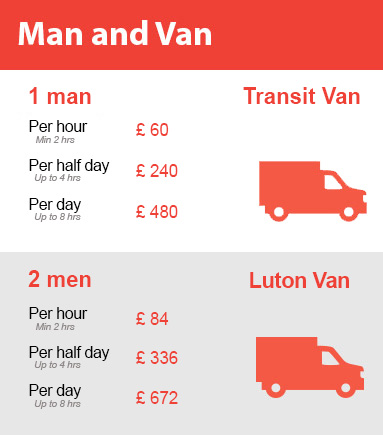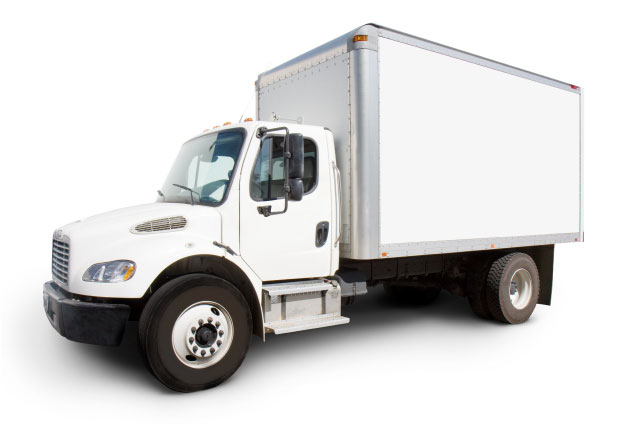Piano relocation: Risks of doing it yourself
Posted on 03/06/2025
Piano Relocation: Risks of Doing It Yourself
Moving a piano is a significant undertaking, often underestimated by novice movers. While the idea of saving money by handling piano relocation yourself may be appealing, it comes with numerous hidden dangers. In this article, we detail the risks associated with DIY piano moving, explain why hiring professional movers is advisable, and offer essential safety tips for those who insist on attempting it solo.

Understanding the Complexity of Piano Moving
Pianos are not just large, heavy pieces of furniture; they are precision musical instruments comprising thousands of intricate parts. Their size, weight, and fragility make relocating a piano a uniquely challenging task. Whether it's an upright, baby grand, or concert grand, the risks attached to moving a piano are extensive and, in many cases, greater than those involved with standard furniture.
- Average upright piano weight: 300-800 lbs
- Grand pianos weight: up to 1,200 lbs
- Pianos balance weight unevenly: Most of their mass is in the upper half
Potential Risks When Relocating a Piano Yourself
Attempting a DIY piano move exposes you to various physical dangers and the potential for costly damage. Below, we examine the major risks in detail.
1. Risk of Personal Injury
One of the most significant hazards of moving a piano yourself is personal injury. These injuries can be minor, such as muscle strains, or severe, like broken bones and spinal cord damage.
- Back Injuries: Lifting several hundred pounds without proper technique and equipment strains the spine.
- Crush Injuries: A falling piano can cause serious harm to hands, feet, or legs.
- Sprains and Strains: Overexertion easily results in muscle and ligament damages.
- Slips, Trips, and Falls: Navigating stairs and tight corners dramatically increases accident potential.
Without professional experience, you lack awareness of the safest ways to maneuver delicate yet hefty instruments.
2. Risk of Damaging Your Piano
Piano damage is a common consequence of inexperienced handling. Examples of potential harm during a self-move include:
- Broken Legs or Pedals: Incorrect lifting can snap legs or damage the pedal assembly.
- Scratched or Cracked Finish: Collisions with walls or failure to properly wrap the instrument scratch surfaces and chip wood.
- Internal Mechanism Damage: Sharp movements or dropping can seriously impact fragile internal components, including hammers and strings.
- Out-of-Tune Result: Jostling a piano frequently knocks it out of tune, requiring costly professional adjustment afterward.
3. Damage to Your Property
Heavy pianos can cause substantial property damage in mere moments. Common issues during a DIY piano move encompass:
- Dented walls and baseboards
- Scratched hardwood floors
- Crumpled carpet and torn linoleum
- Broken tiles or stairs
- Damaged door frames and banisters
The weight and size of a piano can mean one wrong move ruins interior surfaces and fixtures, adding expensive repair work to your piano transport bill.
4. Insufficient Equipment and Planning
Professional piano movers use specialty equipment designed to safely transport large, awkward items. Lack of the right tools increases risk and difficulty:
- Piano dollies and skid boards stabilize transport
- Heavy-duty straps and padding prevent shifting and help protect delicate surfaces
- Custom ramps or stair climbers simplify multi-story moves
- Vehicle with lift gate or tie-down systems ensures secure loading and unloading
DIYers rarely have access to all these specialist items, which makes securing and moving pianos much more difficult and risky.
5. Insufficient Manpower
Attempting do-it-yourself piano moving with too few helpers further endangers everyone involved. An upright piano requires a minimum of 3-4 strong, coordinated adults; a grand may need up to 6. Coordinating movement, communication, and timing without previous experience often leads to mistakes and injuries.
6. Transportation Challenges
Standard moving vans or pickup trucks are often inadequate for safe piano transportation. Pianos must be secured to avoid sliding or tipping, and most consumer-grade vehicles lack tie-down points or shock-absorption systems. Exposure to vibration and the elements increases the risk of expensive instrument damage.
Why Professional Piano Movers Are Essential
Given the risks of self-moving a piano, hiring a professional mover offers peace of mind and serves as a cost-effective choice in the long run. Here's why.
Expertise and Training
Professional piano moving specialists are trained to handle instruments of all sizes. They know how to:
- Properly dismantle, wrap, and secure your piano
- Navigate difficult obstacles like narrow hallways, stairs, and elevators
- Use professional moving equipment
- Transport and unload with minimal risk of damage
Insurance Coverage
If something does go wrong, reputable movers carry insurance--meaning you aren't liable for accidental damage to the instrument or your property. With DIY moving, all the financial risk is yours.
Special Equipment and Vehicles
Licensed piano movers use purpose-built trucks with padded interiors, lift gates, and air-ride suspension to guarantee a smooth journey. They also arrive with every go-to tool needed for both grand and upright pianos.
Less Stress, Better Results
Relocating a piano is stressful, physically demanding, and often slow for DIYers. Hiring professionals saves you time, effort, and potential regrets while ensuring your piano arrives in pristine condition.
Common Myths About DIY Piano Moving
Many people underestimate the risks of moving a piano yourself. Popular misconceptions include:
- "We're strong enough, so we'll be fine." -- Strength alone can't compensate for lack of technique and experience.
- "We'll just take it slow." -- Even a momentary lapse in communication can mean catastrophe.
- "It's just another large object." -- Pianos distribute weight unevenly and their delicate mechanisms are easily damaged.
- "Protecting the piano isn't that important." -- Failure to properly wrap and secure exposes your investment to irreparable harm.
Don't let myths convince you to tackle a move that could result in injury or damage worth thousands of dollars.
What Can Happen if You Move a Piano by Yourself?
A brief look at some real-world failures illustrates why do-it-yourself piano moves so often go wrong:
- Piano falls down steps: Not enough control or improper use of moving straps causes pianos to slip, injuring movers and damaging the instrument beyond repair.
- Piano tips over during a turn: Without proper balancing, a sudden tilt can send a piano crashing onto its side, breaking legs and ruining finishes.
- Truck accident: Pianos not properly strapped in move around inside the truck, leading to strings snapping, action misalignment, or a destroyed case.
- Dropped by movers: Exhausted and uncoordinated, a team may simply drop the piano, resulting in costly restoration--or total loss.
How Much Does Professional Piano Relocation Cost?
Many people are tempted by DIY piano relocation due to concerns about cost. However, the average expense of hiring professionals is often lower than the financial hit from a failed self-move. Pricing factors include:
- Piano size and type
- Distance of move
- Staired entries or tight corners
- Level of preparation and packing needed
On average, local upright piano moves may cost $200-$600, while grand pianos or long-distance moves range from $500-$1,500 or more. When you factor in possible repairs, tuning, and restoration following a botched DIY move--not to mention health care costs after injury--the value in hiring experts becomes clear.

Safety Tips If You Must Move a Piano Yourself
If you are determined to attempt moving a piano yourself, consider the following essential safety tips to minimize risks:
- Assemble a strong team: Never attempt a move solo. Use at least three or four capable helpers.
- Acquire the right equipment: Rent or borrow a piano dolly, durable straps, moving blankets, and access to a truck with a ramp or lift gate.
- Disassemble when possible: Remove legs, lyre, and pedals from grand pianos; close and lock the lid securely; wrap all parts carefully in padding.
- Clear all pathways: Plan and prepare the route in advance. Remove rugs, set up ramps, and measure all entryways.
- Lift with your legs: Avoid back injuries by using proper lifting posture, never bending at the waist.
- Go slowly & communicate: Constantly talk with your team. Move only a few inches at a time when navigating obstacles.
- Never rush stairs: Move one step at a time. Make sure each step is coordinated, and the piano remains balanced.
- Secure during transit: Use strong straps and padding to stabilize the piano inside the vehicle; never leave it loose and unsecured.
- Don't hesitate to call professionals: If anything feels unsafe, stop immediately and seek expert help.
Conclusion: Is DIY Piano Relocation Worth the Risk?
Relocating a piano might initially seem achievable with enough help and determination. Yet, the risks--ranging from severe injury and significant property damage to costly harm to the instrument itself--often outweigh the perceived savings. The intricacies and hazards involved in moving a piano without professional assistance are too easily underestimated.
A piano is a valuable investment and a cherished possession for many households. Protecting it during relocation is well worth the cost and effort of hiring an expert piano moving service. If you value your health, your home, and the long-term playability of your prized instrument, contacting experienced professionals is always the safest option.
If you choose to move your piano yourself, educate yourself on the dangers, prepare thoroughly, and--most importantly--recognize the risks. Saving a few dollars up front is rarely worth the risk of injury, destruction, or regret.





